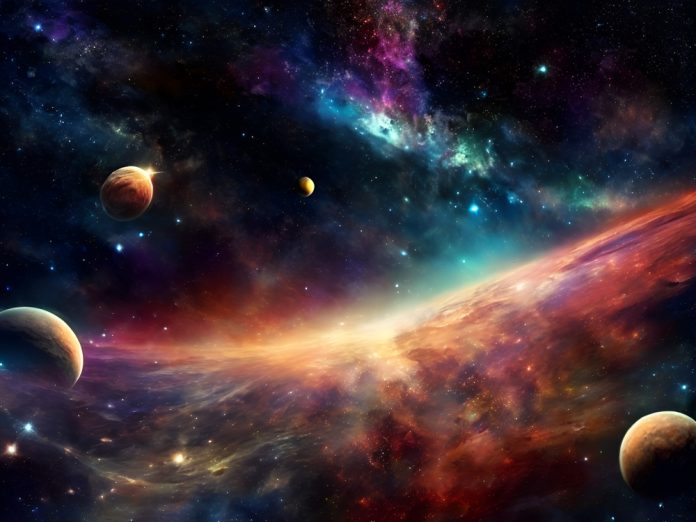Astronomers utilising the James Webb Space Telescope (JWST) have made a groundbreaking observation of a galaxy forming in the early Universe, just 700 million years after the Big Bang.
This discovery marks the earliest known example of inside-out galactic growth, where star formation accelerates in the outskirts of a galaxy rather than at its core.
A mature galaxy in the early Universe
The galaxy observed is a staggering one hundred times smaller than our Milky Way, yet it exhibits remarkable maturity for its age.
Like a bustling city, its core is densely packed with stars, while the outer regions, or ‘suburbs’, are where rapid star formation is occurring. This sprawling structure, with increased star formation at the edges, is an unexpected find for such an early time in the Universe’s history.
The discovery, led by researchers from the University of Cambridge, has provided insights into how galaxies evolve from clouds of gas to the complex systems we see today.
While the JWST images provide a snapshot of a single galaxy’s development, they could help explain the larger process of galactic evolution over cosmic time.
Webb’s window into early galactic growth
The JWST has allowed astronomers to explore galaxies that existed billions of years ago, providing new perspectives on how these celestial bodies grow.
Before Webb, studying the early Universe’s galaxies was extremely challenging due to technological limitations. However, with the unprecedented capabilities of JWST, scientists can now probe the first billion years of cosmic history.
Galaxies grow through two primary mechanisms: gas accretion, where gas is pulled in and converted into stars, or by merging with smaller galaxies. Whether these processes were the same in the early Universe remains an open question.
Astronomers are now looking to Webb for answers, hoping to uncover whether these young galaxies followed the same patterns as those observed in the present-day Universe.
A key part of this study involved using data from the JWST Advanced Extragalactic Survey (JADES) collaboration.
The team observed that while the core of the galaxy was highly dense, most of the star formation was happening in its outer regions.
These findings suggest a dynamic growth process where the galaxy expands from the inside out, a pattern that had been predicted by theoretical models but had never been observed in such detail before.
Researchers liken this growth to a spinning figure skater, where pulling in their arms increases their spin speed. Similarly, as galaxies pull in gas from further distances, they spin faster, often resulting in spiral or disc shapes.
The galaxy’s core has a density comparable to that of massive present-day elliptical galaxies, which have a thousand times more stars.
Despite its young age, the galaxy’s rapid star formation rate in its outskirts shows how quickly it is growing, doubling its stellar mass every 10 million years—significantly faster than the Milky Way, which doubles its mass only every 10 billion years.
Insights into the conditions of the early Universe
The compact nature of the galaxy and the high rate of star formation suggest it is rich in the gas needed for star formation.
This could indicate that galaxies in the early Universe had different environments compared to those we see today. Researchers used Webb’s advanced instruments to measure light across various wavelengths, allowing them to estimate the number of young and old stars in the galaxy.
By forward modelling and factoring in gas emissions and dust absorption, they discovered older stars in the dense core while the surrounding regions showed active star formation. This process provided a deeper understanding of the galaxy’s stellar mass and growth patterns.
While this observation represents a significant step in understanding galactic evolution in the early Universe, it is just the beginning.
The research team is now analysing similar galaxies to see if this pattern of inside-out growth is common. By studying galaxies across different eras, astronomers hope to piece together a broader picture of how galaxies grow and evolve into the structures we see today.









